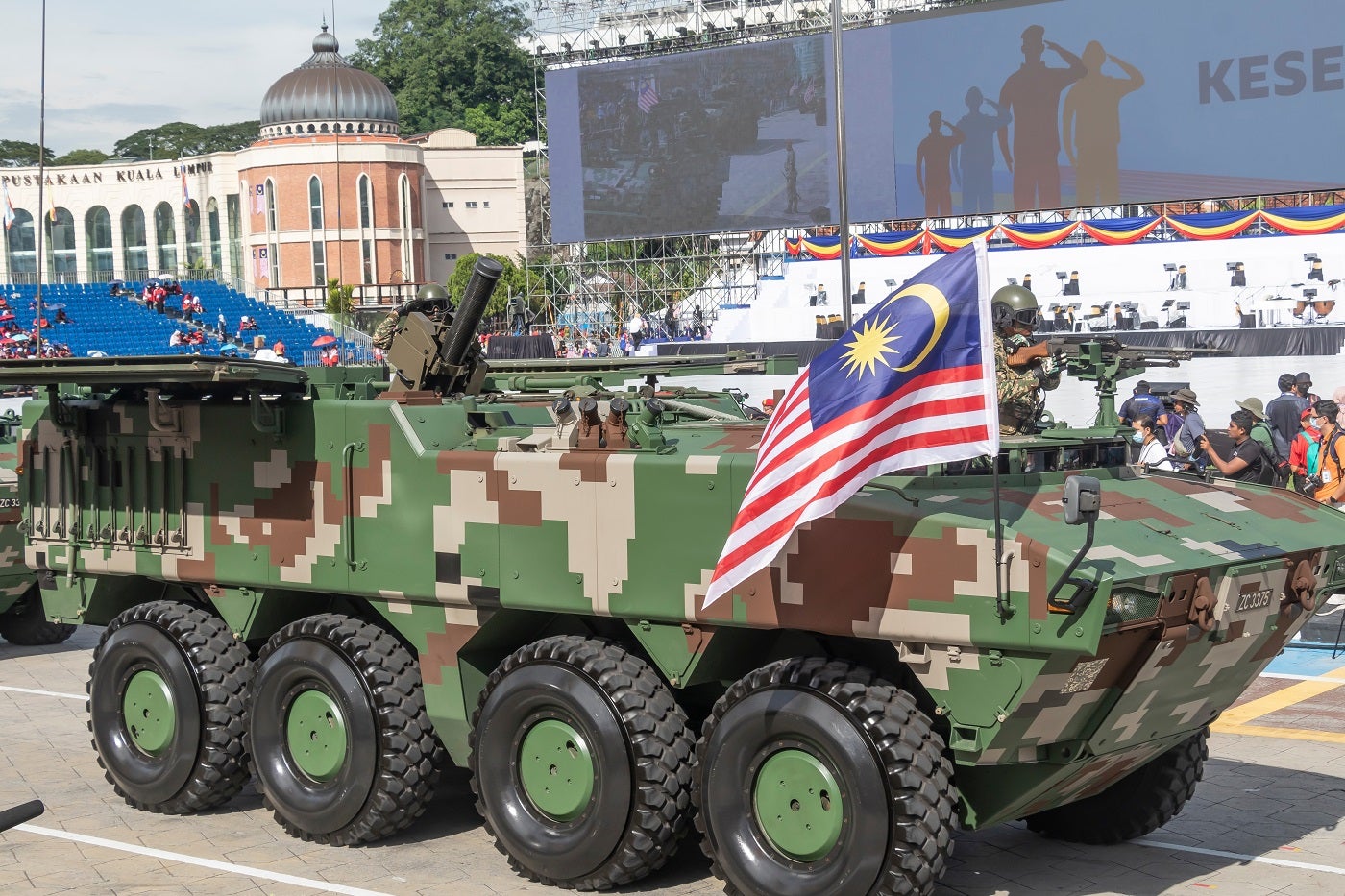
Malaysia is making strides in bolstering its national defence capabilities, focusing strategically on land, air, and naval domains.
With a surge in defence spending, GlobalData’s ‘Malaysia Defense Market 2023-2028′ projects that it will reach $6.2bn by 2028, showing the nation’s commitment to modernisation.
Malaysia’s rising budgets drive defence growth
Malaysia’s dedication to fortifying its defence capabilities is apparent in the allocation of $4bn to the defence budget in 2023. Reflecting a compound annual growth rate (CAGR) of 5.5% from 2019 to 2023. The budget is poised for further expansion, with projections indicating a CAGR of 8.4%, reaching $6.2bn by 2028.
Noteworthy is the surge in acquisition budget, from $1.4bn in 2023 to $2.1bn in 2028, driven by procurement programmes focused on aircraft, corvettes, and armoured vehicles.
Strategic initiatives across domains
Malaysia’s pursuit of military modernisation is evident in land, air, and naval initiatives. The Royal Malaysian Air Force has signed a contract with Korea Aerospace Industries for 18 FA-50 light combat aircraft.
The Royal Malaysian Navy (RMN) has acquired four Batch-I Littoral Mission Ship (LMS) vessels, a move to reduce the number of ship classes in the RMN under its “15 to 5 Transformation Programme.”
Malaysia’s maritime dominance and technological leaps
Naval vessels and surface combatants are projected to be the largest market sector in Malaysia, accounting for $1.96bn in spending from 2023 to 2028, with a CAGR of 15.4%, according to GlobalData’s ‘Malaysia Defense Market 2023-2028′ report. The market for light combat vessels within this sector is anticipated to be $1.15m.
The Maharaja Lela-class frigates, constructed by Boustead Heavy Industries Corporation in collaboration with Naval Group, had an estimated contract allocation of $1.31m over the forecast period.
Promising growth avenues and geopolitical considerations
Malaysia’s defence market has high-growth opportunities, with military fixed-wing aircraft, unmanned aerial vehicles, and missile defence systems leading the pack, boasting CAGRs of 39.7%, 35.3%, and 16.1%, respectively.
Territorial disputes with neighbouring nations continue to shape Malaysia’s defence posture. These disputes necessitate investments in border security and defence capabilities. The nation’s participation in United Nations (UN) peacekeeping initiatives underscores its commitment to global harmony.
Malaysia’s defence strategy combines self-reliance, counter-terrorism measures, and support for UN-sponsored peacekeeping efforts. Additionally, the nation participates in the Five Power Defence Arrangements (FPDA), a multilateral defence cooperation pact involving the UK, Australia, New Zealand, Malaysia, and Singapore.
Balancing security and socioeconomic priorities
As defence spending grows, Malaysia grapples with economic challenges, including income inequality and regional disparities. Balancing defence expenditure with broader financial priorities remains crucial, ensuring the nation’s security while fostering economic development.
The nation’s defence modernisation initiatives across land, air, and naval domains, coupled with its geopolitical engagements, position Malaysia as a key player in the evolving security landscape of Southeast Asia. Balancing these defence investments with broader economic considerations will be pivotal in achieving long-term security and prosperity.




